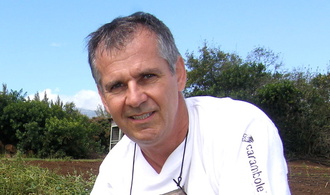Interview with Michel Roux-Cuvelier : "A higher-yield onion variety for Réunion"
Written by Modified on the
We spoke to Michel Roux-Cuvelier, a researcher at CIRAD Reunion (Plant Protection Centre), about a program, began in 2002, to improve onion yield in Reunion.
- What is the onion situation in Réunion?
Reunion has always had a single variety of cultivated onion known as Veronica, which has good organoleptic and conservation qualities. Veronica is a short-day tropical onion which, over the centuries, has adapted to Reunion’s agro-climatic conditions. This variety is used for seed production in Réunion and is the only onion to be included in the official catalogue. However, its low yield results in excessive production costs for producers in Reunion, which puts it incompetition with imported varieties from India and Madagascar in particular, and whose yield is much more consistent.
- Is the solution to create a higher-yield local onion ?
Yes. To do this, we have been looking at more than a hundred onion varieties worldwide. After several selections, we shortlisted just three of them for their characteristics : two from Brazil and one from Israel. Our choice was ultimately a variety of onion from Brazil, which, after hybridization with our local Véronique variety, gave rise to several new varieties which meet current market requirements and are able to compete with imported onions.
- So is this program coming to an end?
Not quite. Our goal is now to include these new varieties of onions in the official catalogue, which will enable us to quickly produce seeds for farmers on the island. To do this, we will first present these varieties to farmers according to agronomic criteria including size, strength, shape, color, ease of peeling ... I use the word “agronomic” because the difference in taste between these new varieties and the original ones is nonexistent. Maybe, in 2 to 3 years, we will see these new varieties of onions on the shelves and stalls of our Reunion markets.


